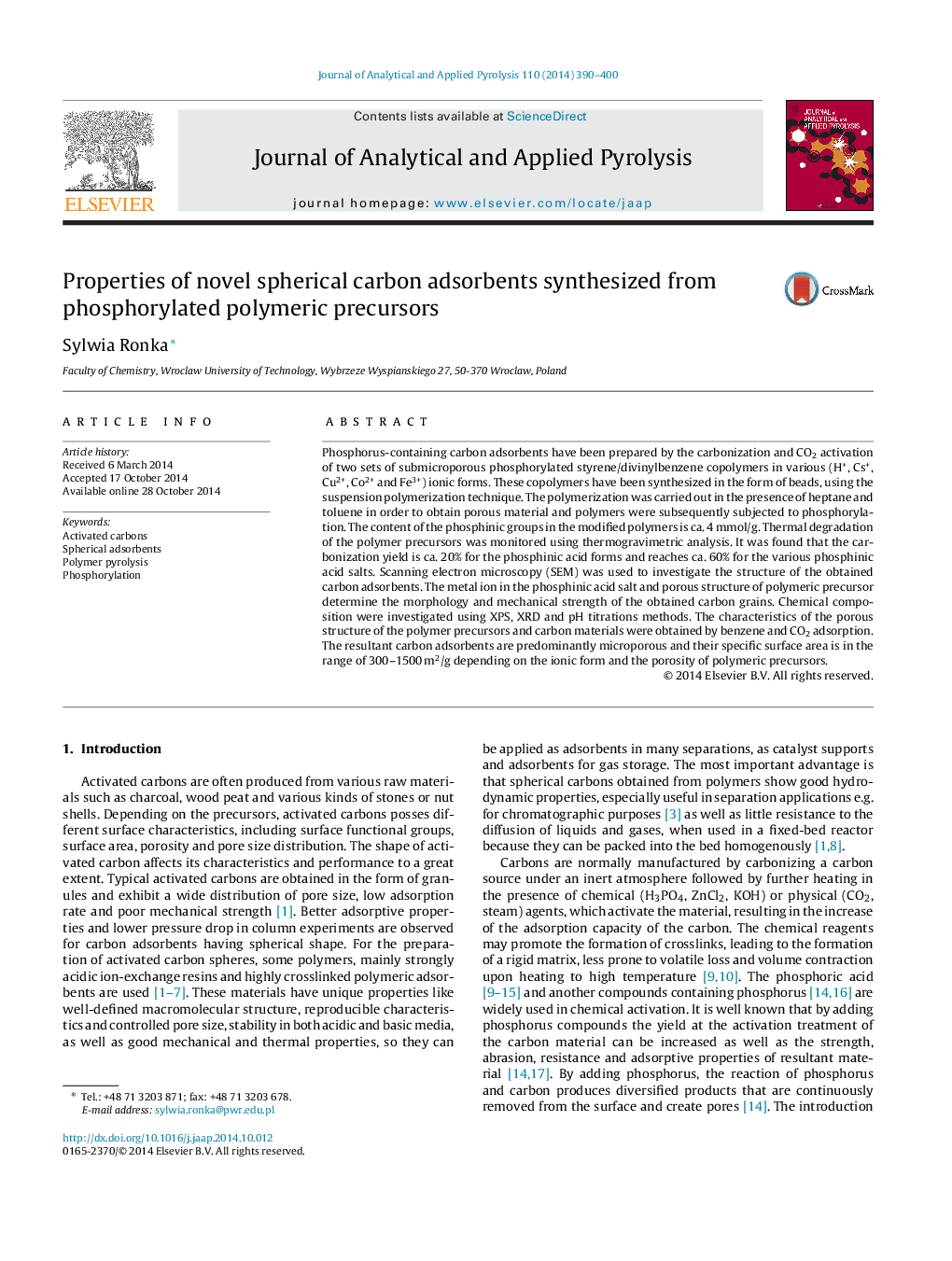| Article ID | Journal | Published Year | Pages | File Type |
|---|---|---|---|---|
| 1197331 | Journal of Analytical and Applied Pyrolysis | 2014 | 11 Pages |
•Novel microporous carbons have been obtained from phosphorylated polymers.•Metal ions determine porous structure and mechanical strength of the carbons.•Metal ions remain in the structure of carbons at different oxidation states.•Obtained carbons have high specific surface areas and acidic surface groups.
Phosphorus-containing carbon adsorbents have been prepared by the carbonization and CO2 activation of two sets of submicroporous phosphorylated styrene/divinylbenzene copolymers in various (H+, Cs+, Cu2+, Co2+ and Fe3+) ionic forms. These copolymers have been synthesized in the form of beads, using the suspension polymerization technique. The polymerization was carried out in the presence of heptane and toluene in order to obtain porous material and polymers were subsequently subjected to phosphorylation. The content of the phosphinic groups in the modified polymers is ca. 4 mmol/g. Thermal degradation of the polymer precursors was monitored using thermogravimetric analysis. It was found that the carbonization yield is ca. 20% for the phosphinic acid forms and reaches ca. 60% for the various phosphinic acid salts. Scanning electron microscopy (SEM) was used to investigate the structure of the obtained carbon adsorbents. The metal ion in the phosphinic acid salt and porous structure of polymeric precursor determine the morphology and mechanical strength of the obtained carbon grains. Chemical composition were investigated using XPS, XRD and pH titrations methods. The characteristics of the porous structure of the polymer precursors and carbon materials were obtained by benzene and CO2 adsorption. The resultant carbon adsorbents are predominantly microporous and their specific surface area is in the range of 300–1500 m2/g depending on the ionic form and the porosity of polymeric precursors.
